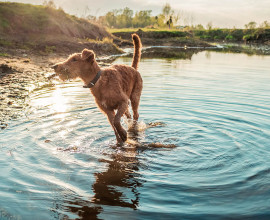Faecal contamination and toxic algae (cyanobacteria) can occur at a number of popular recreational sites throughout Waitaha. We monitor more than 100 popular swim and recreational sites during summer.
Long-term grades
Each swim site is given a long-term grade prior to each summer monitoring season for suitability for swimming and recreation. Sites that are not recommended for swimming because of their long-term grade are red (unsuitable for swimming) on the Land Air Water Aotearoa (LAWA) website(external link) and signage should be in place at the site.
Temporary health warnings
Temporary health warnings are issued when a site was graded as good to swim but there is now an increased risk of cyanobacteria or faecal contamination. Advisory notes may be present but are not an official public health warning.
Mahinga kai
Water containing micro-organisms, chemicals, phytoplankton or cyanobacteria can pose a risk to health through recreational contact, drinking and gathering mahinga kai. Find out more on mahinga kai and health warnings(external link).
Avoid swimming after heavy rain
Swim sites can be affected by rainfall, especially those with fair or poor grades. It’s important to avoid swimming for 48 hours after rain because there is an increased risk of faecal bacteria in the water. Even if the water looks clear, it doesn’t always mean it is good to swim.
River, marine & lake health warnings
River health warnings
View the latest river health warnings.
Lake health warnings
View the latest lake health warnings.
Marine health warnings
View the latest marine biotoxin warnings.
- View health warnings for rivers, lakes and marine.
- Find out more about toxic algae and how you can protect yourself and your animals.
- Find out more about our monitoring programme.
- Visit LAWA's Can I Swim Here? to find out where's good to swim


